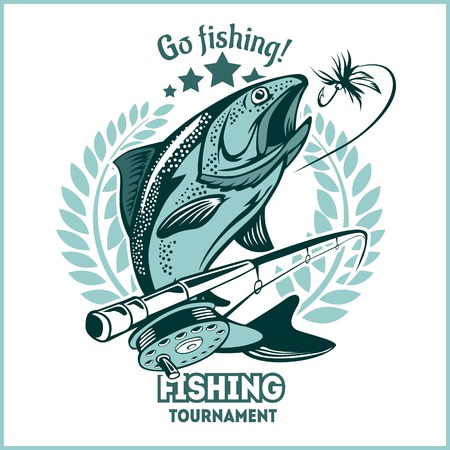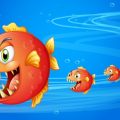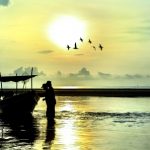1. Understanding the Risks of Kayak Fishing in Hot Weather
Kayak fishing during the summer can be an amazing experience, but it also comes with serious risks if you’re not prepared. High temperatures and long hours under the sun can affect your health, performance, and overall safety on the water. Let’s break down the main dangers you need to watch out for when kayak fishing in hot weather.
Dehydration
When youre paddling under the blazing sun, your body loses fluids fast—especially if theres little shade or breeze. Dehydration can creep up quickly and lead to fatigue, dizziness, and even confusion. These symptoms are dangerous when youre trying to navigate a kayak or handle fishing gear.
Common Signs of Dehydration:
| Sign | Description |
|---|---|
| Dry Mouth | Your mouth feels sticky or parched |
| Dizziness | Feeling lightheaded or unsteady in the kayak |
| Fatigue | You tire more easily than usual |
| Dark Urine | A sign youre not getting enough fluids |
Heat Exhaustion
This happens when your body overheats from prolonged exposure to high temperatures and physical exertion. It’s a step before heatstroke and should be taken seriously. Kayak anglers often wear life vests and other gear that can trap heat, increasing the risk.
Symptoms of Heat Exhaustion:
- Heavy sweating
- Nausea or vomiting
- Muscle cramps
- Weakness or fainting
- Pale or clammy skin
Sun Exposure and UV Risk
Out on the open water, you’re exposed to direct sunlight as well as reflected rays off the water surface. That means double the UV exposure, which increases your risk of sunburn and long-term skin damage. Prolonged exposure without protection can also lead to heat-related illness faster.
Quick Sun Safety Tips:
- Wear a wide-brimmed hat and UV-protective clothing
- Apply SPF 30+ waterproof sunscreen regularly
- Use polarized sunglasses to protect your eyes from glare
- Stay under shade whenever possible—even a DIY canopy on your kayak helps
How Heat Affects Your Performance on the Water
The hotter it gets, the harder it is for your body to keep up. You may notice slower reaction times, reduced stamina, and difficulty concentrating—all of which can affect how you paddle, cast, and respond to sudden changes like shifting currents or nearby boat traffic.
Mental & Physical Impacts of Hot Weather Fishing:
| Condition | Affect on Angler Performance |
|---|---|
| Mental Fatigue | Poor decision-making while navigating or landing fish |
| Physical Fatigue | Sore muscles, slower paddling, reduced casting accuracy |
| Irritability or Confusion | Mistakes with gear handling or safety procedures |
Understanding these risks is the first step toward staying safe while enjoying kayak fishing in hot weather. By recognizing warning signs early and taking proactive steps, you can make sure every trip stays fun—and safe.
2. Essential Gear for Hot-Weather Kayak Fishing
When the summer heat kicks in, having the right gear can make or break your kayak fishing trip. Staying cool, hydrated, and protected from the sun is key to enjoying long hours on the water. Here’s a breakdown of essential equipment and clothing that every angler should bring along when paddling in hot weather.
Hydration Packs: Stay Hydrated Without Slowing Down
Dehydration can sneak up quickly when youre out under the sun. A hydration pack is a game-changer—it lets you sip water without needing to stop and dig through your gear. Look for packs with insulated reservoirs to keep your water cool for hours.
Recommended Features:
- 2-liter or larger capacity
- Insulated hose and bladder
- Lightweight and adjustable straps
Sun-Protection Apparel: Shield Your Skin
The summer sun can be brutal, especially when reflected off the waters surface. Investing in high-quality sun-protection clothing helps block harmful UV rays while keeping you cool and comfortable.
| Item | Features to Look For |
|---|---|
| Long-sleeve UPF shirt | Moisture-wicking, breathable fabric, UPF 50+ |
| Fishing hat with neck flap | Wide brim, lightweight, moisture-wicking band |
| Sunglasses | Polarized lenses, UV protection, floating design (optional) |
| Buff or face gaiter | Breathable material, UV protection, quick-dry fabric |
Cooling Towels: Beat the Heat Instantly
Certain areas like your neck and forehead are prone to overheating. That’s where cooling towels come in handy. Just soak them in water, wring them out, and drape over your skin for immediate relief. They’re compact enough to stash anywhere on your kayak.
Quick Tips:
- Re-wet every 1–2 hours for maximum effect
- Choose microfiber or PVA materials for longer cooling duration
- Keep an extra one in a dry bag just in case
Ventilated Life Vests: Safety Meets Comfort
Your PFD (Personal Flotation Device) is non-negotiable, but traditional vests can feel suffocating in summer. Look for life vests designed with mesh backs and breathable panels—they’ll keep you safe without turning into a sauna.
PFD Must-Haves:
- USCG-approved Type III or V rating
- Mesh ventilation in back and shoulders
- Pockets for easy access to tools and snacks
- Adjustable fit for comfort over light layers
Your Hot-Weather Checklist:
| Gear Item | Purpose |
|---|---|
| Hydration Pack | Keeps you hydrated on-the-go |
| UPF Clothing & Hat | Protects skin from harmful UV rays |
| Sunglasses & Buff | Reduces glare and protects face/neck |
| Cooling Towel | Lowers body temperature quickly |
| Ventilated PFD | Keeps you safe without overheating |
Packing smart is the first step toward a safe and enjoyable day on the water. With these essentials dialed in, you’ll be ready to handle whatever the summer throws at you—comfortably and confidently.
![]()
3. Staying Hydrated and Managing Body Temperature
Fishing from a kayak in hot weather can be an awesome experience, but it also puts extra stress on your body. When you’re out in the sun for hours, especially on the water where heat reflects off the surface, staying hydrated and keeping your body temperature in check is critical for both safety and comfort.
Hydration Tips for Hot Weather Kayak Fishing
Drinking water regularly may sound obvious, but many anglers don’t realize how fast dehydration can sneak up during a long day on the water. Heres how to stay ahead of it:
Smart Hydration Strategies
| Strategy | Description |
|---|---|
| Start Hydrating Early | Begin drinking water before you hit the water. Aim for 16–20 oz about an hour before launch. |
| Sip, Don’t Gulp | Take small sips consistently throughout the day rather than waiting until youre super thirsty. |
| Add Electrolytes | Use electrolyte tablets or sports drinks to replace salt and minerals lost through sweat. |
| Avoid Diuretics | Coffee and energy drinks can lead to fluid loss—limit them during long fishing trips. |
Managing Your Body Temperature
Your body needs help staying cool when temperatures soar. Heat exhaustion is a real risk if you’re not careful. Here are a few ways to keep your core temp down while enjoying your time on the kayak:
Tactics to Stay Cool
- Pace Yourself: Avoid overexertion. Paddle at a comfortable pace, especially during peak heat hours (11 AM – 3 PM).
- Dress Smart: Wear moisture-wicking, light-colored clothing and a wide-brimmed hat to shield from direct sunlight.
- Create Shade: If possible, use a kayak canopy or anchor near shaded areas like overhanging trees or cliffs.
- Cool Towels: Keep a cooling towel around your neck; re-wet it with cold water periodically.
- Mist Spray Bottles: A quick spritz of water on your face and arms can provide instant relief from the heat.
Timing Your Breaks Right
Avoid staying out in direct sun for hours without rest. Schedule short breaks every 60–90 minutes. Pull into shore or drift in shaded spots when possible. Use these breaks to hydrate, snack, and let your body recover from the heat.
Ideal Break Schedule Example
| Time | Action |
|---|---|
| 6:30 AM | Paddle out after pre-hydration |
| 8:00 AM | Tie off in shade, drink water + light snack |
| 9:30 AM | Mist face/neck, sip electrolyte drink |
| 11:00 AM | Paddle to shaded cove, take 15-min break |
| 12:30 PM+ | If temps are extreme, consider heading back early or resting longer mid-day |
The key is to listen to your body—if you feel dizzy, overly tired, or stop sweating, its time to cool down immediately and rehydrate. With smart hydration and cooling strategies, youll stay safe and enjoy more productive time on the water.
4. Tactical Fishing Tips for Extreme Heat
When the summer sun is blazing and temperatures soar, kayak fishing can become more challenging—but with the right strategies, you can still land a great catch. Here are some practical tips to help you adjust your approach and stay successful on the water during extreme heat.
Fish During Cooler Parts of the Day
Fish, like most cold-blooded animals, become less active in high heat. The best time to fish during hot weather is early in the morning or late in the evening when water temperatures are lower and fish are more likely to feed.
| Time of Day | Why It Works |
|---|---|
| Early Morning (5 AM – 9 AM) | Cooler air and water temps encourage fish activity |
| Late Evening (6 PM – Sunset) | Sun starts to set, reducing surface temperature and increasing feeding behavior |
Target Cooler Water Pockets
In extreme heat, fish tend to move to cooler, deeper areas of the water. Look for shaded zones near overhanging trees, under docks, or close to structures that provide cover. Using a fish finder or depth finder can also help you locate these temperature-friendly spots.
Where to Look:
- Underwater springs or creek mouths where cooler water flows in
- Deep holes or drop-offs in lakes and rivers
- Shaded banks or areas with aquatic vegetation
Switch Up Your Bait and Lures
Hot-weather fish tend to be sluggish, so youll need to adapt your bait presentation. Choose lures that mimic slow-moving prey and consider downsizing your tackle. Natural colors usually work better in clear, warm water conditions.
| Lure Type | Recommended Use |
|---|---|
| Soft Plastics (Worms/Grubs) | Use with a slow retrieve near bottom structure |
| Spoons or Jigging Lures | Ideal for vertical presentations in deeper water |
| Topwater Lures | Effective during early morning or dusk when surface activity increases |
Pace Yourself and Plan Smart
Avoid overexertion by planning shorter trips and staying hydrated. Always carry plenty of water, wear sun-protective clothing, and keep an eye on signs of heat exhaustion. Remember—fishing is supposed to be fun, not a survival challenge!
Quick Checklist Before You Launch:
- Hydration: At least 2 liters of water per person
- Sunscreen: SPF 30 or higher, waterproof variety
- Tackle Adjustments: Lightweight gear and heat-appropriate lures
- Trip Timing: Launch at dawn or late afternoon for best results
Adapting your kayak fishing tactics for extreme heat isn’t just about catching more fish—it’s also about staying safe and making your time on the water enjoyable.
5. Safety Best Practices and Emergency Planning
When kayak fishing in hot weather, safety should always come first. The combination of sun exposure, high temperatures, and being on the water can quickly lead to dangerous situations if youre not prepared. Heres how to stay safe and plan ahead for any emergencies that might arise.
Check Weather Conditions Before You Go
Always check the local weather forecast before heading out. Pay close attention to:
- Temperature: Extreme heat can cause dehydration or heatstroke.
- Wind speed: High winds can make paddling difficult and increase your risk of capsizing.
- Storm alerts: Summer storms can roll in fast. Don’t take chances with lightning or rough water.
Inform Someone About Your Trip
No matter how short your trip is, always let someone know where youre going and when you plan to return. Share these details:
- Your launch point and destination
- Your estimated time on the water
- The type and color of your kayak
- Your phone number or emergency contact info
Recognize Signs of Heat-Related Illness
The heat can sneak up on you, especially when youre focused on fishing. Watch for these symptoms:
| Condition | Symptoms | What To Do |
|---|---|---|
| Heat Exhaustion | Dizziness, headache, nausea, excessive sweating, muscle cramps | Get to shade, drink water, cool down with wet towels or splash water on skin |
| Heat Stroke | Confusion, rapid pulse, dry skin (no sweat), fainting | Call 911 immediately! Move to a cool area and try to lower body temperature until help arrives |
Pack Essential Safety and Emergency Gear
You don’t want to be caught unprepared out on the water. Make sure your kayak is stocked with these essentials:
- PFD (Personal Flotation Device): Always wear one!
- Sunscreen & Hat: Protect yourself from sunburn and heat exposure.
- Plenty of Water: Hydrate regularly—don’t wait until you’re thirsty.
- Dried Snacks or Electrolyte Tabs: Keep your energy up and replace lost minerals.
- A Whistle or Waterproof Phone Case: For calling for help if needed.
- A Small First Aid Kit: Include band-aids, antiseptic wipes, pain relievers, etc.
- Paddle Leash & Backup Paddle: So you’re never stranded without a way to move.
Create an Emergency Plan
If something goes wrong, it helps to have a plan already in place. Think through the following scenarios before launching:
- If your kayak flips—do you know how to re-enter safely?
- If you lose your paddle—can you use a backup or signal for help?
- If you feel dizzy or overheated—how close are you to shore?
- If your phone dies—do you have a whistle or other signaling device?
The best way to enjoy kayak fishing in hot weather is to stay alert, be prepared, and respect nature’s power. With a few smart precautions, you’ll stay safe while making great memories out on the water.


